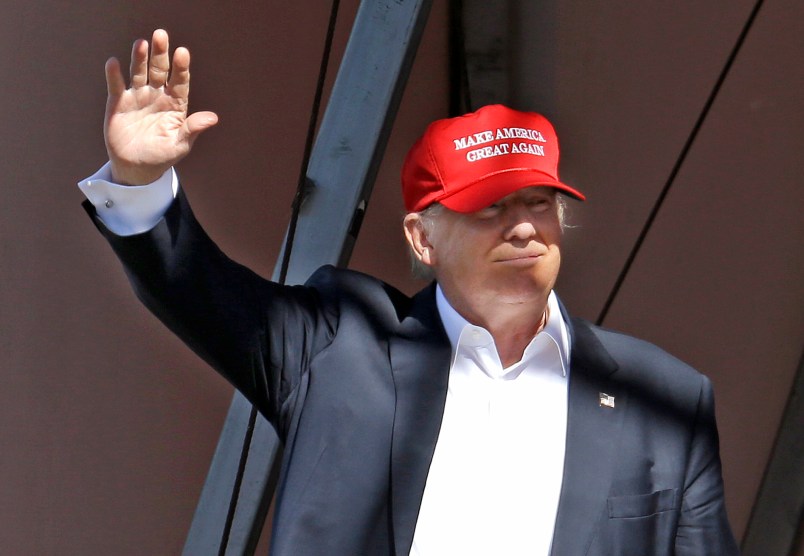Yesterday Quinnipiac came out with batch of swing state polls showing Donald Trump near even or ahead in three key swing states – Florida, Pennsylvania and Ohio. In recent cycles, the Q poll has tended to be Republican friendly at least in part because it models the electorate with fewer college educated voters and fewer minority voters than other pollsters; indeed, fewer than the number who’ve shown up in recent presidential elections. But this morning Reuters/Ipsos released its latest weekly poll which shows Trump just 1 point behind Clinton at Clinton 41, Trump 40. The same poll showed Trump 9 points back just one week ago.
That’s a big big move and from a poll that hasn’t shown a clear GOP lean.
So what’s up?
It is important to look at polling averages, not any one individual poll. But it is worth noting that this is a highly, highly volatile phase of the presidential contest. As you can see from these graphs, both Trump’s and Clinton’s relative popularity has been going up for several weeks. This is not at all surprising. A significant amount of each candidate’s unfavorability rating is based on divisions within their own parties. As the primaries wind up, you’re seeing a clear consolidation of party support behind each candidate. So their relative popularity rises. Clinton is currently at net negative 11.3% and Trump is at net negative 20.1%.
It seems reasonable to assume that this process of consolidation would be a wash since it will affect both Trump and Clinton. It may affect Clinton a bit slower because the Democrats’ primary process hasn’t been declared officially over as a GOP one has. But one would also expect a tougher process of consolidation on the GOP side because of the depth of its resistance to Trump as a candidate.
So what’s happening? Good question. As I’ve said in a few posts, watch the polls – not individual polls but the overall trend. I’m skeptical that this will be a trend for a number of reasons. But it’s also important to recognize that this is a phase of the campaign where you would expect substantial moves to happen if they’re going to happen. This is way too little evidence to see a trend. But we should keep watching. Because our assumptions and expectations should never withstand first contact with actual evidence.








